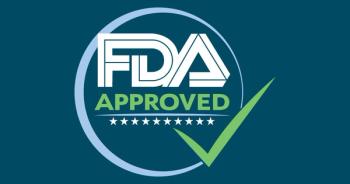
Less teenage sex and suicide, while obesity is on the rise
Tourists converge on the capital city in July to celebrate Independence Day and watch the spectacular fireworks on the mall. But members of Congress have a different reaction, using the holiday for a recess from their labors and a chance to take the pulse of their constituents back home. They'll be back later in the month, doing their best to make a record they can run on when the campaign kicks off later in the summer. So far, the record is unimpressive. The appropriations cycle for the 2004 fiscal year is finally complete, but the budget for 2005 is stymied by a dispute within the Republican majority about a "pay as you go" requirement for the tax cuts the administration wants. Drug reimportation, in some form, is considered likely to pass, and attempts to patch holes in the Medicare reform act of last session will be made. But at a time when--according to a study released last month by Families USA--nearly 82 million people were without health insurance at some point during the last two years and health-care costs continue their relentless rise, no fundamental health-care legislation seems likely to emerge from this session.
One thing is fairly certain: Lobbyists for the health-care industry will continue to have a major influence on the debate. An analysis of filings with the Federal Election Commission published by an online news service called PoliticalMoneyLine reveals that the health-care industry spent more on lobbying in 2003--$296.8 million--than any other industry sector. Top spenders included the American Association of Retired Persons (AARP) at $20.88 million; the American Medical Association (AMA) at $17.3 million; Pharmaceutical Research and Manufacturers of America (PhRMA), at $16.04 million; the American Hospital Association ($12.48 million); and Blue Cross/Blue Shield Association ($8.14 million). There is no reason to suppose that industry lobbying efforts will slack off in 2004.
There's more from Washington to report:
The 2003 Youth Risk Behavior Surveillance findings gathered by the Centers for Disease Control and Prevention (CDC) and released in late May are encouraging about sexual behavior. The data, based on a survey of 15,000 high school students, show students less likely to have had sex (47%, down from 54% in 1991), reporting fewer sexual partners (14% reported four or more partners, down from 19% in 1991), and using condoms more often (63% at most recent sexual intercourse, up from 46% in 1991. Smoking and drinking are also less common. The bad news? Thirty percent of students surveyed were overweight or at risk of becoming so--about the same percentage that does not have daily physical education classes.
In other CDC data published last month (MMWR, June 11, 2004/53[22];471), suicide--the third leading cause of death among persons 10 to 19 years old--declined from 6.2 to 4.6 for every 100,000 youngsters in that age range between 1992 and 2001. The most common methods of suicide in this age group were shooting, followed by suffocation (hanging, mostly) and poisoning. Pediatricians concerned about the higher risk of suicide and other forms of violence among non-heterosexual youth (two to seven times higher for suicide, for example, than for their heterosexual age mates) can find expert guidance on how to mitigate the unique health risks of these youngsters in a clinical report titled Sexual Orientation and Adolescents in the June 2004 issue of Pediatrics.
Last month, a federal district court judge ruled the ban on so-called partial birth abortion unconstitutional on three grounds: placing an "undue" burden on women seeking abortion; using "dangerously vague" language; and failing to provide an exception to protect the mother's health, as required in earlier Supreme Court decisions on abortion. The case before the judge was brought by the city of San Francisco and the Planned Parenthood Federation of America on behalf of its affiliates and the physicians to whom it refers patients. The decision will certainly be appealed.
The Department of Health and Human Services (HHS) has released new guidelines for protecting research subjects from harm that might be caused by financial conflicts of interests involving the researchers or their institutions. Suggested mechanisms for avoiding such conflicts include separating institutional responsibility for research from management of the institution's financial interests, establishing conflict of interest committees, determining the kind of information provided to subjects regarding funding and financial interests, and modifying informed consent procedures when a potential or actual financial conflict exists. The guidelines apply to all research on human subjects conducted or supported by HHS agencies or regulated by the Food and Drug Administration (FDA).
Judith Asch-Goodkin
Contributing Editor
Newsletter
Access practical, evidence-based guidance to support better care for our youngest patients. Join our email list for the latest clinical updates.














